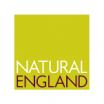North Thames Estuary and Marshes - LTC4 area Terrestrial Invertebrate Survey.
Abstract
This document presents the results of a survey conducted on terrestrial invertebrates. The purpose of this survey was to fulfill a request made by Natural England, who is considering the expansion of the Mucking Flats & Marshes Site of Special Scientific Interest (SSSI). The aim is to acknowledge the national significance of various habitats and the species they support. This report provides a description and assessment of the terrestrial invertebrate features with ecological value that were found within the survey area. The survey conducted in the LTC4 area recorded the presence of the following protected and/or notable invertebrate species: Brown-banded carder bee (Bombus humilis) - NERC S41, classified as vulnerable in Essex; Small heath (Coenonympha pamphilus) - IUCN NT, S41, listed as red in Essex; Click beetle (Agriotes sordidus) - IUCN pre 1994 R, listed as red in Essex; Spider (Agyneta mollis) - classified as vulnerable in Essex; Spider (Agyneta simplicitarsis) - considered regionally important in Essex; Leafhopper (Anoscopus albifrons) - noted as Notable B; Pseudoscorpion (Chthonius tetrachelatus) - listed as red in Essex; Solitary bee (Hylaeus cornutus) - Notable A, considered regionally important in Essex; Centipede (Lamyctes emarginatus) - IUCN NE, categorized as threatened in Essex; Ant (Lasius alienus) - classified as vulnerable in Essex; Ground beetle (Ophonus ardosiacus) - IUCN LC, listed as red in Essex; Leafhopper (Stroggylocephalus livens) - noted as Notable B; Ground beetle (Syntomus truncatellus) - IUCN LC, NS includes 2; Spider (Zodarion italicum) - IUCN LC, NS includes, considered regionally important in Essex; and Histeridae beetle (Saprinus aeneus) - IUCN LC.
